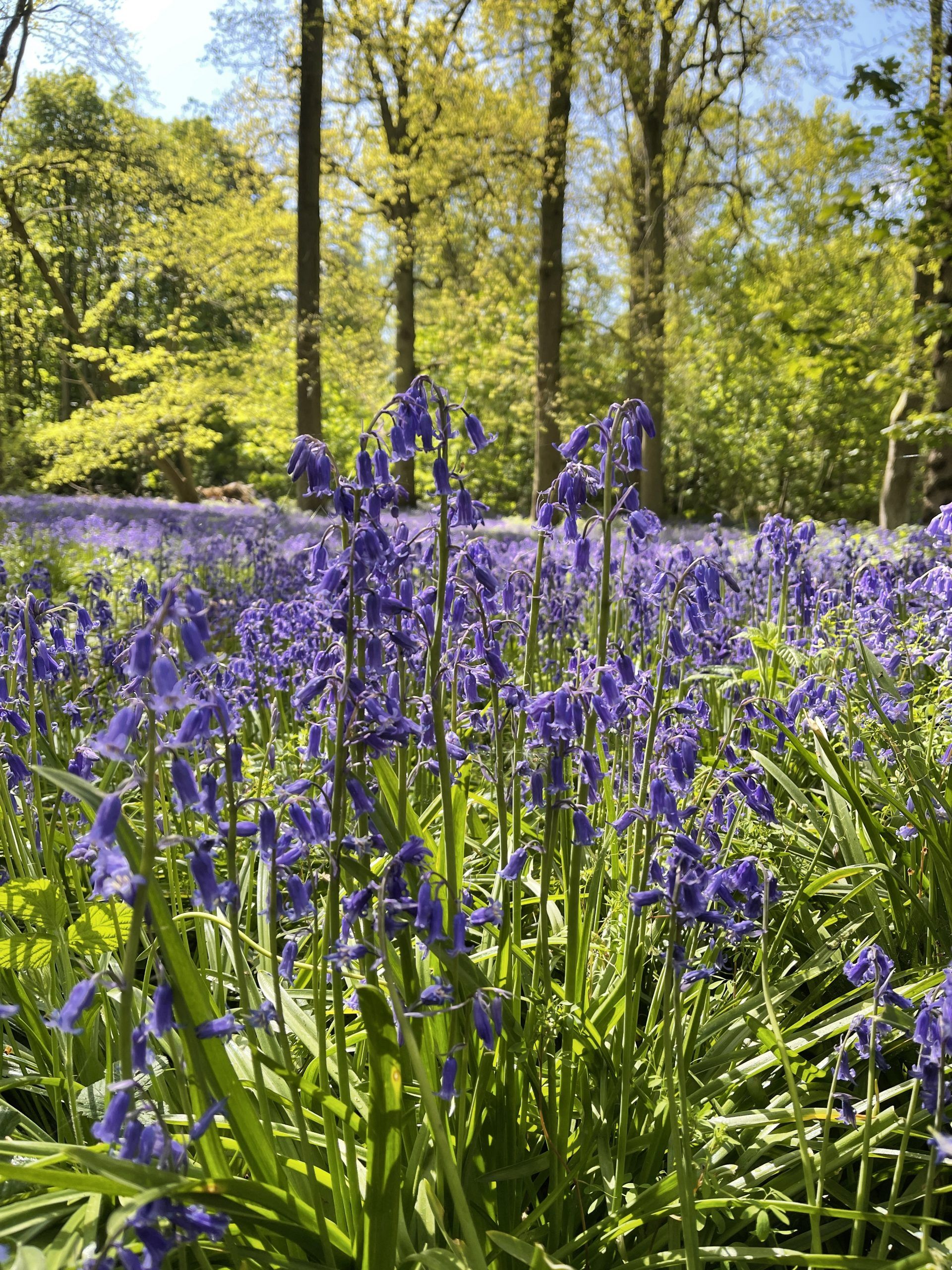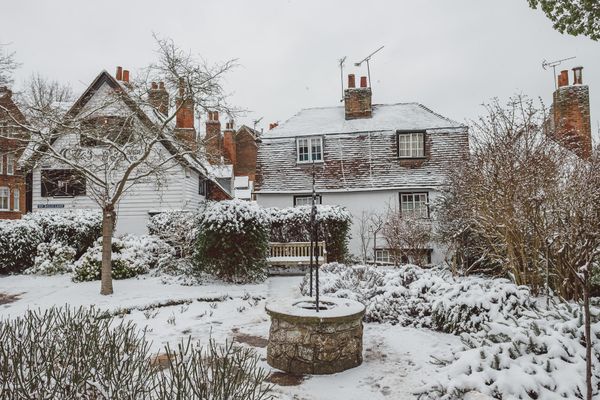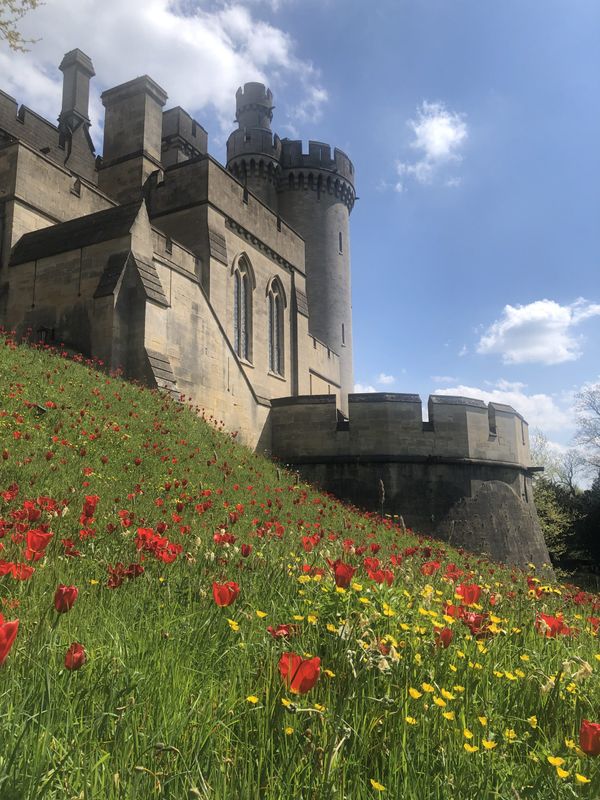According to the National Trust, around half of the world’s bluebells are found here in the UK! We love seeing the sweeping carpets of blue cropping up everywhere as we travel around England and beyond, signifying that Spring has well and truly sprung. It’s always delightful to find patches of bluebells on our countryside dog walks, but for the most spectacular, undisturbed displays we head to National Trust properties each Spring to take in the breathtaking blankets of bluebells. Read on for a few of our favourite places to admire the bluebells this Spring.
Know before you go:
- It’s against the law to intentionally pick, uproot or damage bluebells. Bluebell colonies take anywhere from 5-7 years to establish, and can take years to recover from being trodden on. If a bluebell’s leaves get crushed, the plant will die from lack of food via photosynthesis. When visiting bluebell woods this Spring, always stick to designated pathways and keep children and dogs under close control. Make sure you leave these beautiful bluebell woodlands for future visitors to enjoy!
- While bluebell season typically lasts through April and May, the flowers can be affected by a particularly harsh Winter and in these cases the best time to see them in bloom can shift. We like to check the social media pages of National Trust properties we’re planning to visit, to keep an eye on when the flowers are in full bloom and have the best bluebell viewing experience! If you’re unsure whether the bluebells will be fully out during your visit, head to each property’s Instagram or Facebook page for updates and photos from the staff in real time, to help you decide when to visit. It’s also worth checking their tagged photos to see other visitors’ experiences!
Stourhead, Wiltshire
Stourhead is enchanting at any time of year, but come Spring the Bonham Wood area of the estate bursts with shades of blue and purple as bluebells crop up in their thousands. What makes a visit here in bluebell season even more special is the backdrop of the lake behind the Temple of Apollo, with the flowers bringing a splash of Spring colour to the foreground. Take your time to wander around the lake here and discover the Grotto, Pantheon, and Palladian Bridge, and bring your pooch – aside from the house, dogs are welcome everywhere across the gardens and wider estate.
Blickling Estate, Norfolk
Blickling is by far one of our top places to see bluebells, so much so that we’ve taken a Spring visit here multiple times over the years just to view the seemingly endless sea of bluebells! Blickling has so much to offer in the way of sightseeing and walking routes, from the Orangery and 55 acres of formal gardens, to the Tower and Mausoleum tucked away in the trees. We’d recommend parking in the main car park by the house for a lovely long walk into the woods, spotting bluebells appearing as you walk. However, if you’re only interested in visiting the huge carpet of bluebells, then the Woodgate car park on the North West side of the estate is situated in the Great Wood where bluebells come out in swathes in the Spring. This car park is much smaller than the main one, so arrive as early as you can to secure a spot. In the woods, narrow pathways criss-cross through the trees for easy viewing access and ample photo opportunities! If you get low enough when you snap your photos, you can make it appear as if you’re standing in amongst the flowers when you’re standing on the path, creating a beautiful portrait without damaging the bluebells. Dogs are welcome to roam off lead once you’re out of the car park, as long as they don’t cause damage to the bluebells. A magical place to see bluebells this season!
Calke Abbey, Derbyshire
Another fantastic bluebell spot, it’s no surprise to us that in 2023 Calke Abbey was voted one of the best places in the UK to see wildflowers in Spring. The National Trust have created many suggested walking routes at Calke Abbey, ranging from 1.4km – 3.8km, details of which you’ll find on maps across the estate. To view the bluebells in all their glory, snap a photo of the map on your phone when you arrive before heading North out of the car park (away from the house) to walk the 2.3km blue trail through the Serpentine Wood. This trail is short enough for everyone to enjoy (little ones won’t get bored!) and dogs are permitted off-lead on the majority of the route – once the path splits and you turn onto the blue route, your four-legged friends are free to roam!
Standen House, West Sussex
During Spring, the hillside gardens at Standen are transformed into a rainbow of colour, from their rhododendrons and azaleas, to the tulips and blossom trees. In bluebell season, the flowers cover an area of around 10 acres across the estate. Once you’ve explored the formal gardens and house, with its impressive Morris & Co. interiors, head past the house and adjoining buildings on your left and out to the signposted Rockinghill Wood where bluebells cover the woodland floor in their thousands! Dogs are welcome to join you on the woodland walk, but must be kept on a short lead at all times.

Chirk Castle, Wales
For those heading further West on the hunt for bluebells, just over the England/Wales border Chirk Castle provides a fairytale setting for a bluebell walk on a sunny Spring day. The gardens at Chirk Castle have won awards for their 5.5 acres of perfectly manicured lawns, clipped yew trees and herbaceous borders, and not forgetting the flora-filled woodlands. The estate is situated within an Area of Outstanding Natural Beauty, and has also been designated a Site of Special Scientific Interest as an important habitat for wildflowers. Follow the 4km circular Woodland Walk trail, waymarked in blue, into the bluebell-covered woodland beyond the castle – and don’t forget to look back to snap some photos as the 13th-century Castle provides a dramatic backdrop. If you’re bringing your dog along they’ll need to be kept on lead at all times, even when the pathways turn into open fields.
Emmetts Garden, Kent
The woods at Emmetts Garden have been named a Site of Special Scientific Interest due to the swathes of native bluebells that bloom here in the Springtime, making bluebell season by far one of the most popular times to visit this property. We’d highly recommend visiting during the week if you’re able to, and arriving as early as you can to view the flowers with fewer crowds. The bluebells cover the hillside where there are pathways weaving through the woodlands on multiple levels, so the flowers can be admired from above and below. Situated on one of the highest points in Kent, you’ll also be treated to panoramic views over the Weald, as well as a gorgeous 20th-century rose garden and rock gardens containing rare and exotic plants from all over the world. Dogs are welcome throughout Emmetts on a short lead.



If you found this post helpful, please consider supporting our blog by donating as little as £1 to our running costs! Thank-you!

We are Chris+Suze
Latest Posts

National Trust
Being National Trust members gives us free access to some of the most beautiful parklands and properties across the UK! Investing in membership even just for a year is definitely worth it.

Thank you for reading!
We hope you’ve enjoyed this post! For more posts about great places to visit, head to our blog or follow us on Instagram and Facebook for photos and videos from our travels! Let us know in the comments – have you been to any of these National Trust places in Spring? Or has our post inspired you to go!





